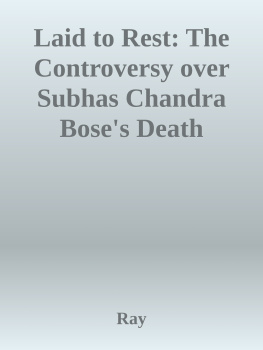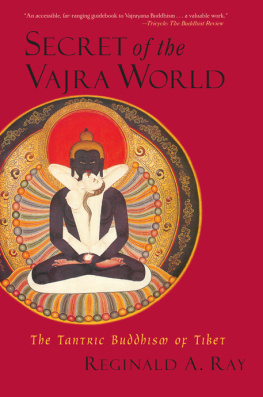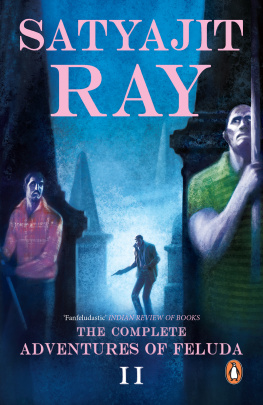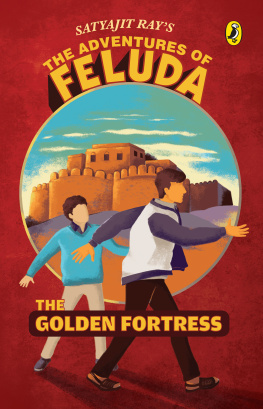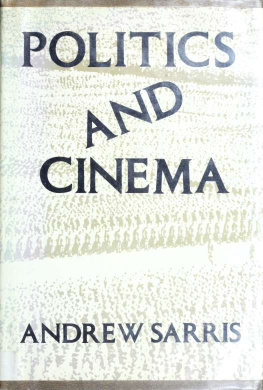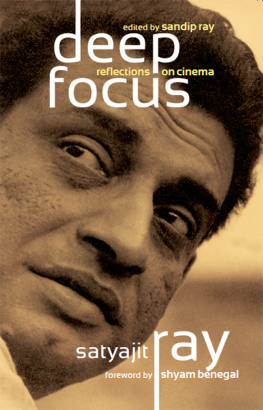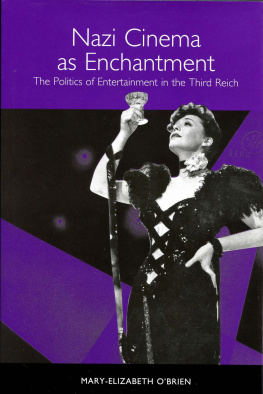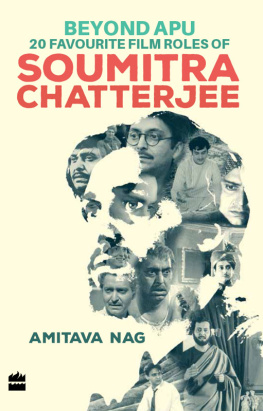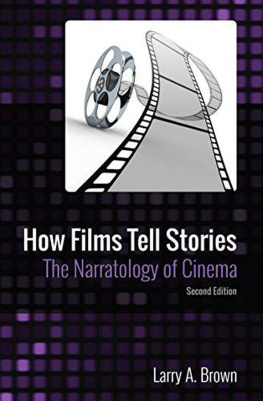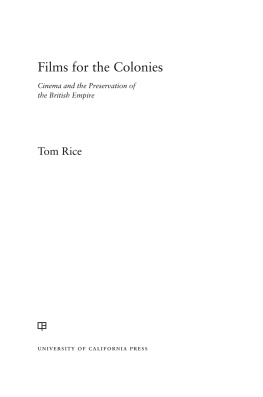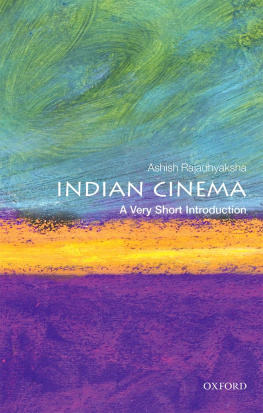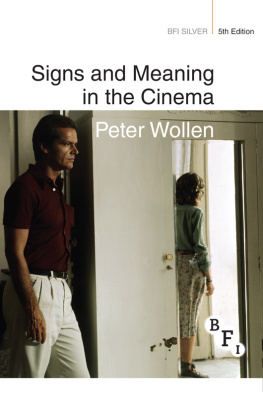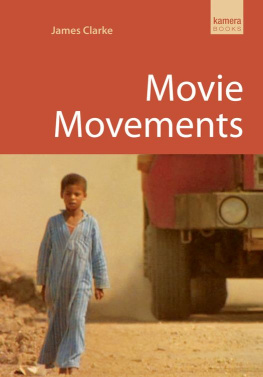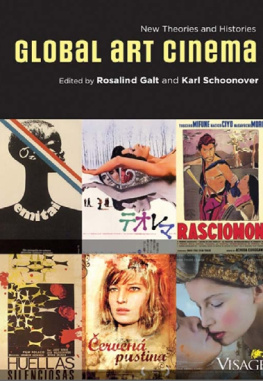Table of Contents
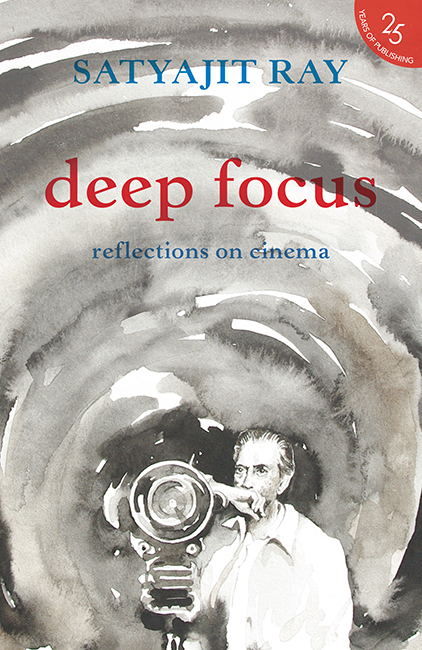
DEEP FOCUS
Reflections on Cinema
Satyajit Ray
Edited by Sandip Ray
in association with
Dhritiman Chaterji, Arup K. De
Deepak Mukerjee, Debasis Mukhopadhyay
Foreword by
Shyam Benegal


CONTENTS
SATYAJIT RAY, MY late father, published Our Films Their Films, his first collection of essays in English, in 1976. That remained his only original book on cinema in that language till the appearance of the present volume containing articles written since 1949, well before he became a film-maker.
It was some time ago that our Society decided to put together a book (or books) with articles by my father which lay scattered in newspapers and magazines both at home and abroad. But we had no idea exactly how many of them existed. My father never made a meticulous effort to preserve his published writings.
We had, however, a few articles in our archives. For others, we launched a search, a difficult one at that, as some of the dailies and periodicals where they had appeared were no longer extant. Our efforts ultimately yielded a number of essays and talks, long and short, which seemed good enough material for a full-fledged book. The search for more is still on.
These pieces, which were beyond access for contemporary readers for a long time, offer revealing insights into the evolution of my fathers thoughts on aspects of cinema as a visual art, his own craft of film-making, and his views on such other great directors as Chaplin, Bergman, Godard and Antonioni.
This book would not have been possible but for the generous support we received from Mr D.N. Ghosh, President of our Society and himself a distinguished author. We also take this occasion to thank V.K. Karthika and Shantanu Ray Chaudhuri, publisher and chief copy editor of HarperCollins Publishers India, respectively, for the keen interest they took in the publication of this book.
SANDIP RAY
Member Secretary Society for the Preservation of Satyajit Ray Films,
Kolkata
I WAS PROBABLY a trifle more passionate about going to the movies than my siblings or my peers at school. Before long, cinema became an extension not only of the world I occupied (from which it was altogether different) but also extended my imagination to an extraordinary degree to the vast expanse of the many universes of geography, history, mythology and fantasy, otherwise locked up between the covers of books.
Making up my mind that all I wanted to do when I grew up was to make my own films gave me a licence to indulge my film- watching fancy much to the alarm of my parents. Discriminating films even from the point of view of enjoying some and not others developed over a period of time. This in turn was followed by seeking out films that one liked and working out the reasons for doing so. While still in school, I already had favourite directors alongside film stars. These films were marked out for repeat viewing. The films that were available for viewing at the time were mostly English-language films from Hollywood and Hindi films with a smattering of an odd Marathi film from Poona. The clear favourites among the directors were John Ford, William Wyler, John Huston and a director pair from Britain, Michael Powell and Emeric Pressburger. Hindi films by Mehboob, Sohrab Modi, Shantaram, Fatehlal and Damle were the ones I looked forward to seeing. I had yet to discover film-makers from other parts of the world.
Soon after I entered college I had my very first exposure to films from Europe, particularly Italy. Bicycle Thieves, Shoeshine, Miracle in Milan and Bitter Rice were among them. These had come as part of the First International Film Festival held in India and had presumably found Indian distributors. Some Soviet films came in at the time and I saw Mark Donskois films based on Maxim Gorkys novels apart from Battleship Potemkin and the first part of Ivan the Terrible. I found the film experience offered by these films far greater than most of the films I had seen before this. Soon enough, an Indian film caught my eye: Bimal Roys Do Bigha Zameen.
Not long afterwards on a trip to Kolkata, an uncle who lived there strongly recommended that I see a Bengali film made by a first-time film-maker. I saw the film in a south Kolkata cinema where it was playing. It was an afternoon show and the film was Pather Panchali. The experience was indescribable. As the expression goes, it simply blew my mind. When the show ended I rushed back to the box office and bought a ticket for the next show and went back yet again for the show after that. I saw the film several times over in the next couple of days before I returned home to Hyderabad. Here was a film, the like of which I had never seen before. And here was a film-maker who had broken free of the conventions of both Hollywood and Indian cinema.
Satyajit Ray had shattered the mould that had bound film- makers in India to a form of film-making that had remained unchanged since the introduction of sound. By a strange coincidence, this was also a time of revolutions in the cinemas of Europe: Italian Neo-realism, French Nouvelle Vague, the Free Cinema of Britain and the post-war films from northern, central and eastern Europe. All these had taken cinema to an exciting new phase. Far more significant to me than any of these developments was this single film by a first-time Indian film-maker in a film language and idiom that was both modern and entirely his own. The locations and the people in the film were believable and culture specific. It was beyond anything that I had imagined films of being capable of achieving; a true watershed in Indian cinema.
Satyajit Ray had arrived. He was a game changer in what until then was bound largely by conventions that had evolved entirely on the basis of commercial valuation of films by the cinema industry relying on narrative styles taken directly from the urban theatre that preceded it. Soon after came his younger contemporaries, Ritwik Ghatak and Mrinal Sen, who created their own individual styles in cinema, making Bengal once again a trendsetter, this time in cinema. For someone like me, who had film-making ambitions, Pather Panchali opened up a world of possibilities, helping me to break free from the web of film influences in which I was held. It compelled me to rethink fundamentally many of my views on how to create film narratives.
If there is a single contribution of Satyajit Ray to the world of Indian cinema it would be the path he created for Indian cinema to break free from being self-referential and imitative of subjects largely lifted from Hollywood films, in favour of a standardized urban view of the world that was largely the creation of nineteenth-century urban theatre.
Satyajit Ray set a very high benchmark for himself and eventually left behind an enviable oeuvre of films. The influence of Satyajit Ray on the many cinemas of India has been immense but rarely acknowledged. There are many areas of film-making where his influence has been felt in greater or lesser degree whether in acting styles, photography, production design, the use of sound and even in the creation of music scores which were rarely thematic before his time.
Equally, Ray was as creative and articulate in his writing as he was in his film-making. He is recognized as one of the best Indian writers of childrens stories. He also wrote quite extensively on cinema.


